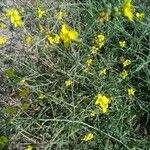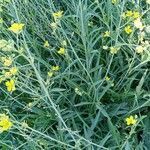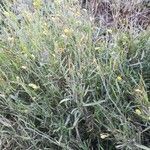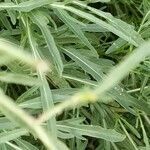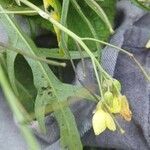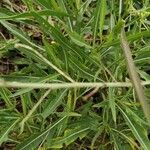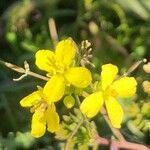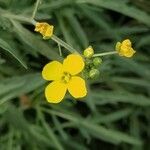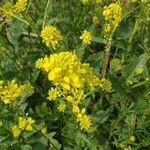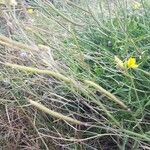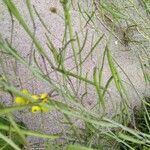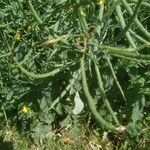Perennial, not foetid; stems erect, stout, branching, leafy, glabrous, 30-100 cm tall. Lvs mostly cauline, variable, petiolate, glabrous, linear-lanceolate to lanceolate and toothed, to broadly triangular in outline and deeply pinnatifid, 4-20 × 1-4-(10) cm; upper lvs becoming smaller. Racemes glabrous, (10)-30-60 cm tall. Pedicels 1.5-4 cm long. Sepals triangular, glabrous or rarely sparsely hairy, 4.5-6 × 2-3.5 mm. Petals yellow, spathulate, shortly clawed, 7-12 × 3-5 mm. Silique 20-30-(45) × 1.5-2 mm, on short gynophore (0.5)-1-2 mm long; beak seedless. Seeds oblong, brown, 1-1.5 mm long.
Glabrous or subglabrous, taprooted perennial (but sometimes blooming the first year), erect, 3–8 dm; lvs mostly cauline but below the middle of the stem, somewhat fleshy and glaucous, foetid when crushed, oblanceolate to narrowly oblong, toothed to more often deeply pinnatifid; lower pedicels becoming remote and 2–3 cm; pet yellow; frs ascending, 2–5 cm, the base of the valves elevated 1–2 mm above the scars of the perianth; 2n=22. Native of Europe, established as a weed in waste places here and there in our range, especially northward, and in w. U.S. May–Sept.
Perennial herb, erect, 20–80 cm tall, glabrous and glaucous. Leaves cauline, glabrous, foetid when crushed; lower leaves petiolate, variable, pinnatifid with linear lobes, or coarsely dentate, or entire; upper leaves reducing. Sepals 4–6.5 mm long, the outer half-spreading, inner erect, glabrous, Petals 8–15 mm long, lemon-yellow, tapering to claw. Qvary on a gynophore. Siliqua 2–6 cm long, 1–2 mm wide, erect to spreading on pedicels mostly 15–40 mm long; gynophore 1–3 mm long; beak seedless, slender, 2–2.5 mm long. Seeds 1–1.5 mm long, yellow.
A cabbage family herb. It is a plant which keeps growing from year to year. It grows 0.2-1.2 m high. The leaves near the base are slightly lobed but the leaves on the stem are narrow and entire or with teeth. The leaves have an unpleasant smell when crushed. The flowers have sepals which spread out. The petals are bright yellow. The fruit stalks are also spreading. The pods are flattened and with a short beak. Seed are arranged in two rows.
